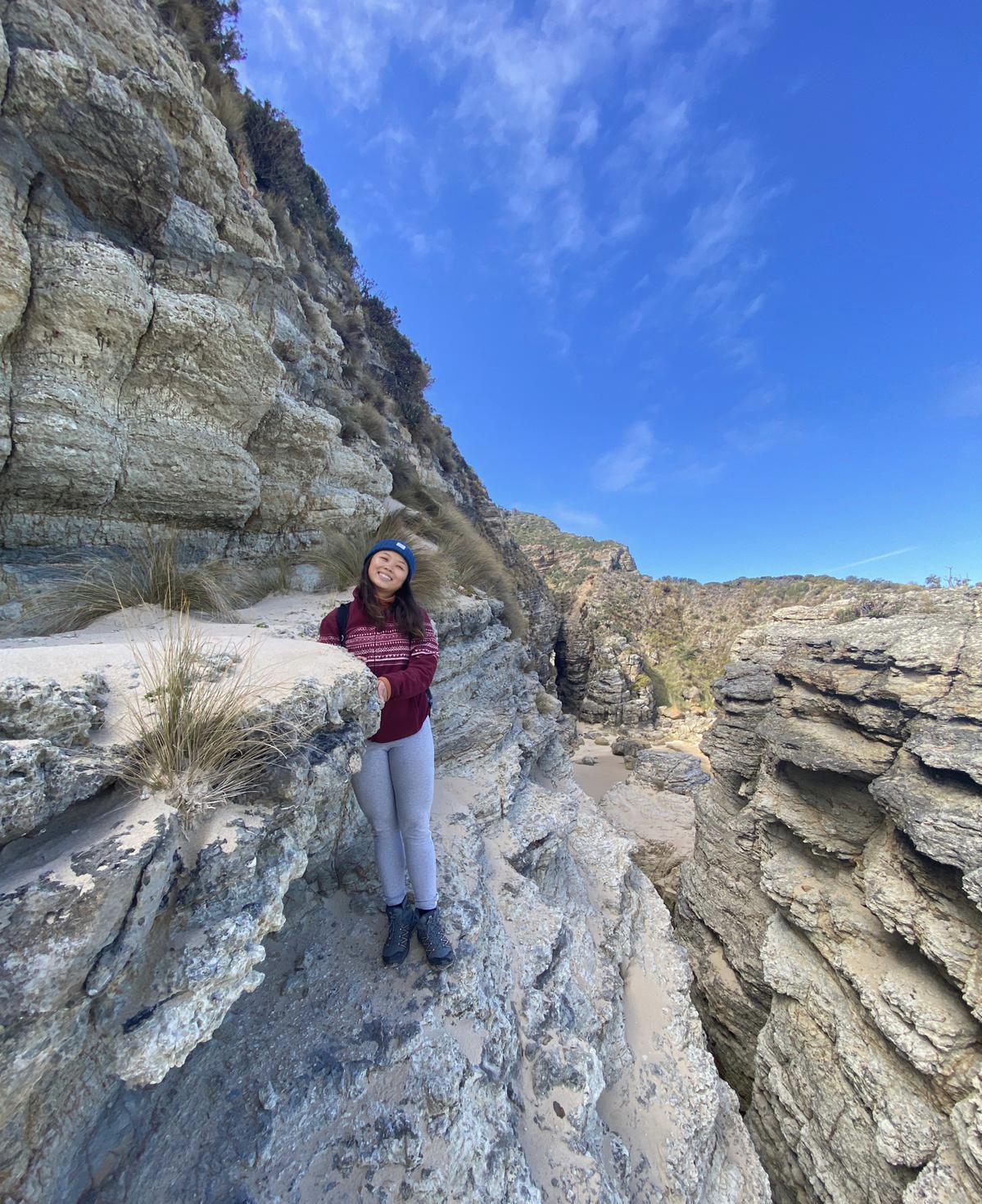Are you itching to explore the vibrant culture, food, and history of Spain but hesitant about traveling solo? Fear not! In this ultimate guide, we have got you covered with all the essential tips and tricks to make your solo travel a breeze.
We have also included a culinary journey through Spain’s must-try dishes that will tantalize your taste buds.
Last updated on: 02-01-2024
How safe is Spain for solo travel?

Spain is generally safe for solo travel. In bigger cities, it is recommended to take precautions to avoid pickpocketing.
Spain is considered to be in the top 10% of countries in the world for safety. The country holds the 32nd spot on the Global Peace Index. The GPI is a creation of the Institute for Economics and Peace (IEP) and stands as the foremost global measure of worldwide tranquility.
It’s easy to get around as a solo traveler, and there are many diverse regions, friendly locals, and vibrant culture to explore.
What is the best time to visit Spain for solo travelers?

The best time to visit Spain depends on your preferences and interests. Here are some general guidelines to help you plan your trip:
- Shoulder seasons: The months of April/May and September/October are considered the best time to visit Spain, as they are part of the shoulder seasons, which are the months between the low tourist season and the high tourist season. These months offer a balance between pleasant weather and fewer crowds compared to the peak summer months.
- Summer months: If you prefer to spend most of your days on the beach and in crowded clubs, the summer months of June to August might be ideal for you. However, keep in mind that it can be hot during these months, and the country may be more crowded.
- Spring and fall: Spain is a great destination year-round, but the spring and fall seasons offer a more relaxed experience with fewer crowds and pleasant weather. These months are recommended for those who want to explore the country’s diverse landscapes, historic sites, and vibrant culture.
- Local festivals and events: Spain is known for its festivals, such as La Tomatina and the running of the bulls in Pamplona. If you’re interested in experiencing these unique events, plan your trip around them.
What are the most important holidays and festivals in Spain?
Spain is known for its many festivals and holidays, both religious and secular. Some of the most important ones include:
- Holy Week (Semana Santa): This is one of the most anticipated festivals in Spain, taking place during Easter and is an entire week filled with processions and other religious celebrations. The most impressive festivities are always expected during the Semana Santa in Seville and the Holy Week in Malaga.
- Carnival: Celebrated every year in February, Carnival is a party that converts the city into a place pulsing with music, energy, and fun. The carnival of Cadiz is particularly famous for its authentic Andalusian spirit.
- The Fallas of Valencia: This is one of the most famous holidays in Spain, lasting for a week with giant and colorful statues and figures that fill the streets. They tend to be satirical, political, or related to pop culture and entertainment.
- La Tomatina: This festival in Buñol might be the most famous holiday in Spain. For more than 70 years, it’s been celebrated on the last Wednesday of August. Thousands gather to throw tomatoes at each other.
- Fiesta de San Fermín: This is a 9-day festival in Pamplona that includes its most famous event, the running of the bulls. Over 1 million people attend what has become one of the most popular festivals in Spain.
- Seville Fair: This is a week-long festival in Seville that takes place two weeks after Easter. It is a celebration of Andalusian culture, with flamenco dancing, bullfighting, and traditional dress.
- Barcelona’s La Mercè Festival: This is a week-long festival in Barcelona that takes place in September. It is a celebration of the city’s patron saint, with parades, fireworks, and concerts.
These are just a few of the many festivals and holidays in Spain. It is important to check the dates of these events before planning a trip to Spain, as many sights and banks close down on national holidays.

How to meet other solo travelers in Spain
One effective way to find travel buddies is to join social media groups on Facebook or Reddit that cater specifically to solo travelers in Spain.

This allows you to interact with like-minded individuals, exchange tips and advice, and even potentially meet up during your travels.
Additionally, downloading a solo travel app or attending organized events or meetups for solo travelers provides a great opportunity to connect with others exploring Spain on their own.
Staying in accommodations such as hostels or guesthouses also promotes social interaction, providing plenty of opportunities to meet new people.
Is Spain expensive for solo travelers?
Spain can be affordable for solo travelers, especially if you plan and budget carefully. According to various sources, the average daily cost for food and accommodation for solo travelers in Spain ranges from €48 to €150.
This includes the cost of a budget hotel or hostel, meals, and local transportation. However, the actual cost can vary depending on the traveler’s preferences and budget.
For example, eating at local tapas bars can be an affordable way to enjoy Spanish cuisine, while fine dining restaurants can be more expensive.
Additionally, the cost of accommodation can vary depending on the location and season. It is recommended to plan and budget carefully to make the most of your trip to Spain as a solo traveler.

Tip (no advertisement): for planning your route, we can recommend using the Stippl app.
What are the best places to visit for solo travelers in Spain?

Some of the best places to visit for solo travelers in Spain include:
- Granada: Known for its lively locals, decadent architecture, and a slow pace of life.
- Barcelona: A colorful coastal city known for its art, architecture, and vibrant culture.
- Santiago de Compostela: A city of religious significance and a popular destination for solo travelers.
- Seville: A vibrant and lively city in the Andalusia region, offering a rich cultural experience.
- Costa Brava and Costa del Sol: Stunning beaches where solo travelers can relax and soak up the Mediterranean sun.
- Picos de Europa National Park: A great destination for solo travelers who enjoy outdoor activities and natural beauty.
- Bilbao, San Sebastian, and Santander: Underrated Spanish regions with beautiful cities worth exploring for solo travelers.
These destinations offer a mix of urban exploration, stunning natural scenery, and a rich cultural experience, making them ideal for solo travelers.

What are the best ways to get around in Spain?
The best ways to get around in Spain for solo travelers include:
- Train: Traveling by train is usually the easiest, fastest, and most sustainable way of getting around Spain. The country has one of the largest high-speed train networks in the world, making it convenient to move between major cities like Madrid, Barcelona, Seville, and Malaga.
- Bus: For budget-conscious travelers, the bus is a cost-effective way to move around Spain, especially for longer distances. It’s also a great way to meet locals and practice Spanish. Buses are comfortable and most of them have free Wi-Fi and toilets on board.
- Ride-Sharing: Ride-share options like BlaBlaCar are available in Spain, offering an affordable and flexible way to travel between cities. It’s a good option for solo travelers looking to share the cost of travel and meet new people.
- Boat or Ferry: Traveling by boat or ferry is a pleasant way to move between the Peninsula (main land) and the islands, especially if you wish to take your car, motorbike, or bicycle on board. However, it’s a more drawn-out travel experience and is best if time is not an issue.
5 Must-try dishes in Spain

No journey through Spain would be complete without indulging in the delectable dishes the country has to offer. Here are 5 must-try dishes:
1. Tapas
Experience the vibrant culinary culture of Spain through the tradition of tapas. Enjoy a variety of small, flavorful dishes showcasing the best of Spanish ingredients. Try popular tapas like patatas bravas, tortilla española, and albondigas.
Embrace the social aspect of tapas by sharing and sampling different dishes with friends or fellow travelers.
2. Seafood Paella
Indulge in the taste of authentic seafood paella in Valencia, a true delight for your senses. This iconic dish of Spain combines fragrant rice, aromatic saffron, and an array of fresh seafood, creating a flavorful blend that will treat your taste buds.
3. Gazpacho
Gazpacho, a cold soup speciality from Andalusia, is a refreshing summer dish popular in southern Spain. Made with fresh vegetables, bread, and olive oil, this chilled soup offers a burst of flavor.

The ingredients vary across regions but typically include tomatoes, cucumbers, peppers, garlic, and onions.
4. Tortilla Española
Indulge in the savory delight of tortilla española, a famous omelette from Spain. Experience the perfect blend of eggs, potatoes, and onions in this traditional Spanish dish. Immerse yourself in the culinary traditions of Spain by savoring a slice of tortilla española.
5. Churros
Churros are a must-try dessert, offering a delightful way to satisfy your sweet tooth. Experience the delight of dipping freshly fried churros into a cup of thick chocolate sauce, adding to the irresistible sweetness.
Whether you’re exploring the vibrant streets of Madrid or relaxing on the sunny beaches of Barcelona, indulging in warm churros is a great way to immerse yourself in Spanish cuisine.

Midori, the Chief Explorer at Likeplan, is deeply passionate about travel and dedicated to connecting travellers to enrich their journeys and create unforgettable experiences. With a wealth of solo trips under her belt, she is on a mission to empower people to venture out and explore the world, even when they have to do it alone.
